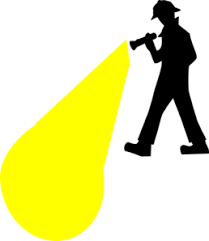Don’t judge a book by its cover. We’ve all heard it. We’ve all done it. We make first impressions of other people based on what we see. First impressions last and first impressions are usually made within the first few seconds. The impressions we make are based on our perceptions and world-views which are shaped by our values, environments, and belief systems. They vary greatly from person to person and just like fingerprints, no two people have the exact same bias pattern.

How can I be sure? If you have siblings, compare notes about your childhood. If you are like most people you will find that your siblings have very different perceptions about what it was like. The point is this: if siblings who grew up in the same environment have wildly different perceptions, doesn’t it make sense that all the strangers we work with every day would look at life very differently too?
Discussions around bias and diversity typically include the Big Four: race, gender, age, and religion. But bias runs much deeper than that. Diversity includes personality types, socio-economic factors, education level, marital and family status, geographic areas, physical appearance, type of schooling, personal habits, the list goes on and on.
The bias I hear about most frequently from leaders involves generational differences. When I’m facilitating a leadership development course, I start by asking the group what they hope to get from the training. Invariably someone wants to know how to lead different generations followed by a sea of nodding heads. There it is. Bias. They don’t know it yet but I do. As soon as leaders put an entire group in a box their bias has been exposed.
I don’t come right out and tell them. I take them through a process of self-discovery and they get the ‘aha’ on their own. One activity includes identifying perceptions about each of the three largest generations in the workplace today: Baby Boomers, Gen X, and Millenials.
Can you guess the most common bias they have about Baby Boomers? They hate change, they hate technology, and they don’t like to use email.
Imagine you are interviewing someone for a job that requires implementing or adapting to a lot of change, especially technology change. In walks a Baby Boomer. What are the chances you’ll hire them? If you aren’t aware of your bias, the chances are slim and you won’t even know why. It’s unconscious bias at work. You crossed them off the list as soon as they walked in the door and you didn’t even realize it. Instead you’ll offer the job to the Millenial you interviewed previously who just loves change! That’s the perception anyway.
Most leaders aren’t aware of their bias and they are often surprised when they go through the self-discovery exercises and the light bulb goes on. Exposing one’s own bias is done for one purpose – to make better decisions and develop higher-level leadership skills. It is never done to shame, blame, or condemn anyone. And no one should ever be punished or made to feel guilty for having unconscious bias. We all have bias and becoming aware is the first step to becoming a better leader and creating a more diverse workforce.
Go to ‘The Vault’ at www.kiwilive.com enter access code: toolkit and download the sample Bias Index Questionnaire to check your own bias.
Liz Uram is a leadership skills expert who works with organizations that want to equip their management team for success.
